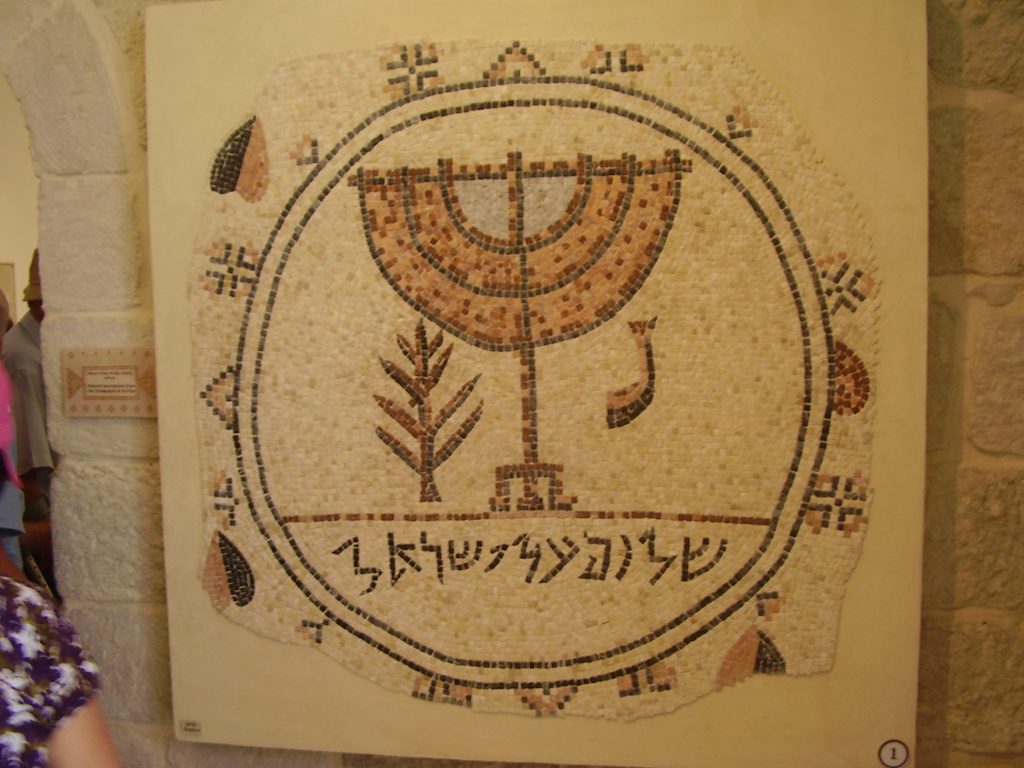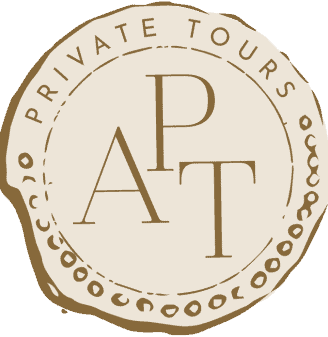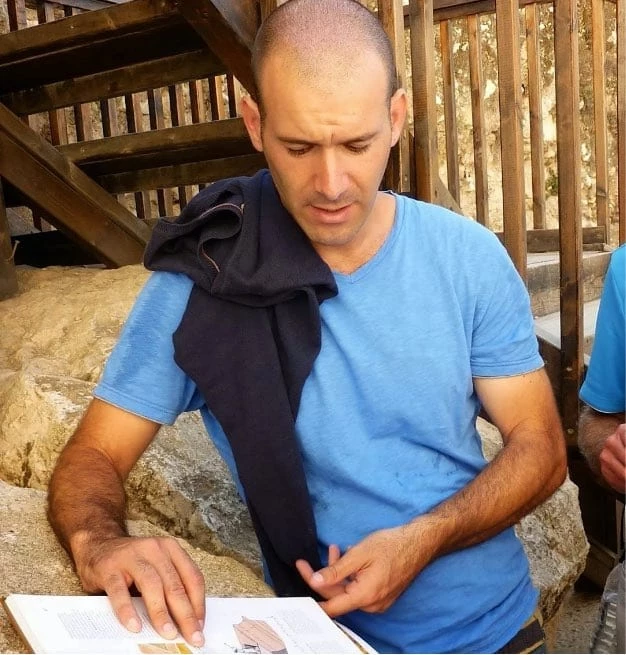The Jericho synagogue (Shalom Al Yisrael Synagogue) dates to the late 6th or early 7th century CE and was discovered in Jericho in 1936. All that remains from the ancient prayer house is its mosaic floor, which contains an Aramaic inscription presenting thanks to the synagogue donors, and a well-preserved central medallion with the inscription “Shalom al Yisrael”, “Peace on Israel”. This led to the site also being known as Shalom Al Yisrael Synagogue.

The Discovery of Jericho Synagogue
The synagogue, dating from the Byzantine period, was revealed in excavations conducted in 1936 by Dimitri Baramki of the Department of Antiquities under the British Mandate. The well-off Arab Jerusalemite, Husni Shahwan, who owned the land, built a house on top of the mosaic, careful to preserve it. The mosaic floor incorporates Jewish symbols such as the Ark of the Covenant, the Temple Menorah, a shofar, and a lulav. There is also a Hebrew inscription, “Peace [up]on Israel” (שלום על ישראל), after which the mosaic was named. The phrase “Peace on Israel” has been widely used on Jewish and sometimes Samaritan synagogue floors from the Byzantine and the Early Muslim period in one known case.
Hasmonean Royal Winter Palaces Elisha's Spring Jericho

Ancient Synagogues in Palestine
Ancient synagogues in Palestine refer to synagogues and their remains in the region commonly referred to as Israel, built by the Jewish and Samaritan communities from the time of the Hasmonean dynasty during the Late Hellenistic period, to the Late Byzantine period. Numerous inscriptions have been found in the ancient synagogues of the Land of Israel; the vast majority of these, c.140, are in Aramaic, with another c.50 in Greek and only a few in Hebrew.

